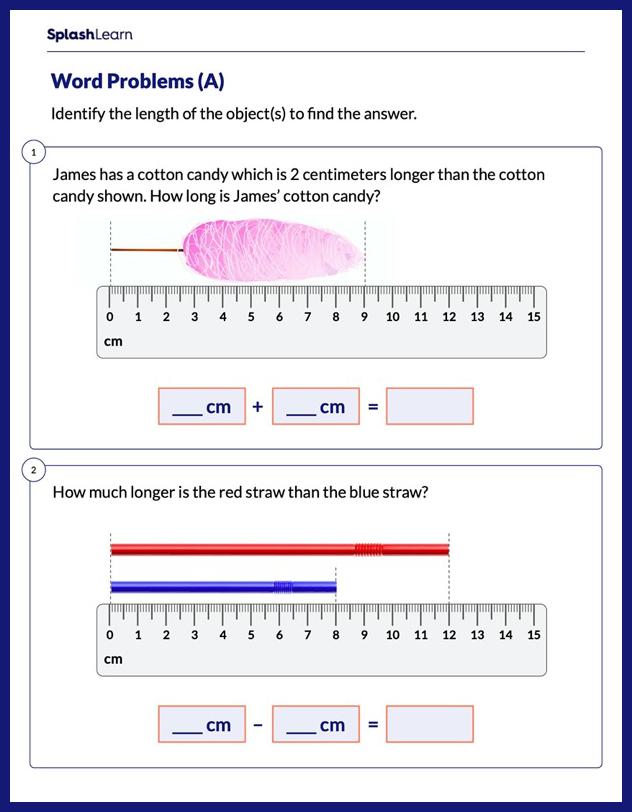What is Measurement in Math?
Take a look at some common questions we hear in daily life.
- How old are you?
- How much do you weigh?
- How tall are you?
- How much water can be filled in your water bottle?
- How hot is it today?
To answer the above questions; what we need is to measure.
- To find how old you are, you need to measure time.
- To know how much you weigh, you must weigh yourself.
- To know how tall you are, you need to measure your height (length)
- To know how much water you can fill in your water bottle, you need to measure the capacity of your bottle.
- To find out how hot it is today, you need to measure the temperature.
So, what exactly is “measurement”?
Measurement is the process of finding a number that shows the amount of something.
Measurement Definition
Measurement is a system to measure the height, weight, capacity or even amount of certain objects. We can measure how long things are or how tall or how far two things are. For example: The height of Oliver is 100 inches and the height of the giraffe is 150 inches.
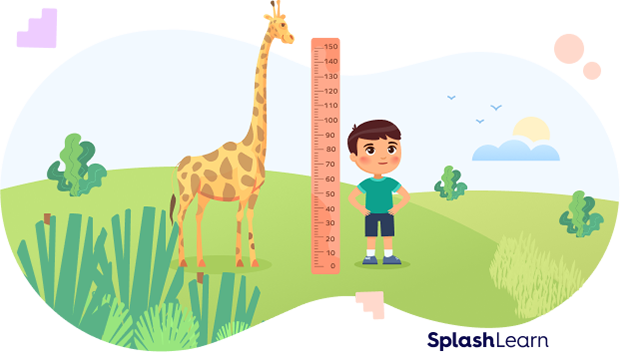
Recommended Worksheets
What Is a Measuring Unit?
A standard quantity used to express a physical quantity is known as a measuring unit. For example, we use inches, i.e., “in” to measure the length of small objects like pencil, pen or matchstick.
Units are the tools to measure and compare different things. Comparison becomes easy when all the units for the measurement are the same. Different units can be classified depending on their use.
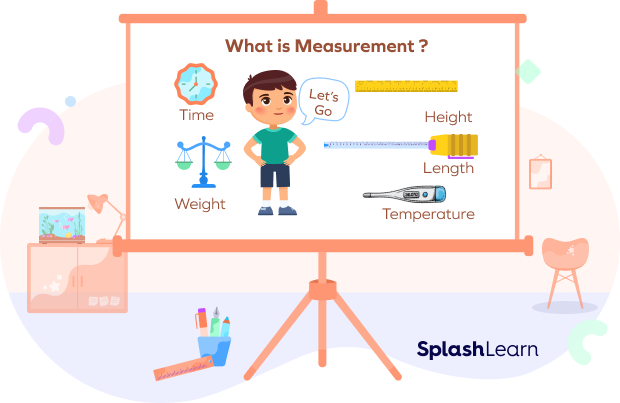
Here’s a list of units of measurements we use to measure various things:
- Length or Height
- Weight
- Volume
- Time
- Money
- Temperature
- Length
The amount of something that is measured from one end to the other along the longest side is called its length.
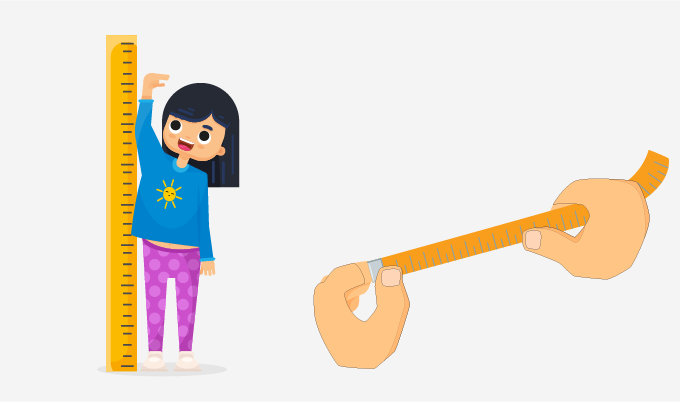
Length is measured in centimeters, meters, kilometers, feet, and miles
Length of a given object describes how long things are or the distance between two points. Length helps us to identify the size of an object, how tall or long an object is or the distance from one point to another. When we measure the size of an object horizontally, it is known as length, whereas, when we measure the size of an object vertically, it’s known as the height of an object.

The following are some of the examples of units of measurement of length as per the US customary units:
- Inches: Its abbreviation is “in.” It is used to measure the height, length or even thickness of small objects like the height of a chair.
- Foot: Its abbreviation is “ft.” It is used to measure short distances between two places or height of an object like height of a person.
- Yard: Its abbreviation is “yd.” It is used to measure the distances between the two places that the foot can not measure. For example: Length of a playground.
- Mile – Its abbreviation is “mi.” It is used to measure long distances like distance between two cities.
We can easily convert units into each other as follows:
1 mile $= 1760$ yards
1 yard $= 3$ foot
1 foot $= 12$ inches
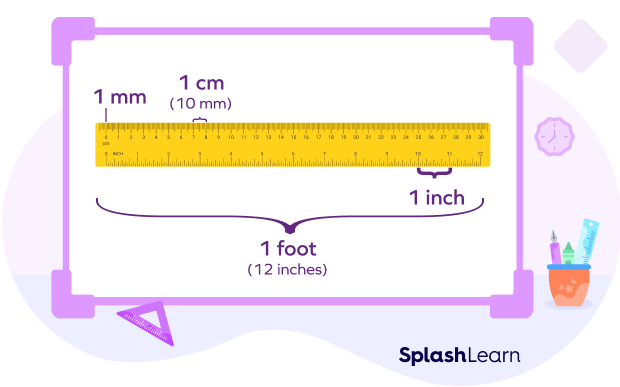
We can compare two objects by their length or height.
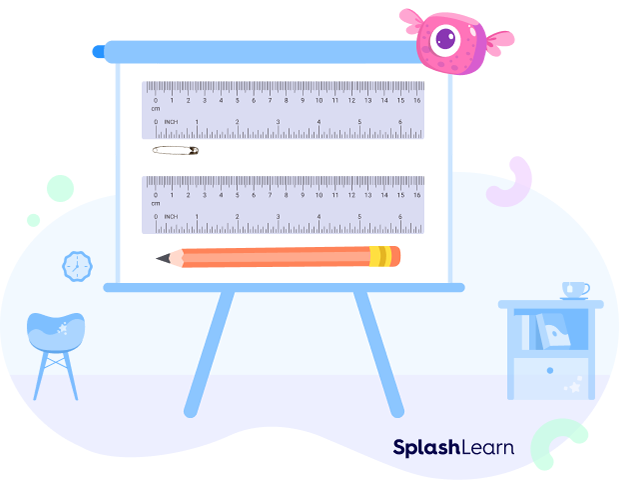
In the above image, we see that the length of the safety pin is 1 inch whereas the length of the pencil is 6 inches.
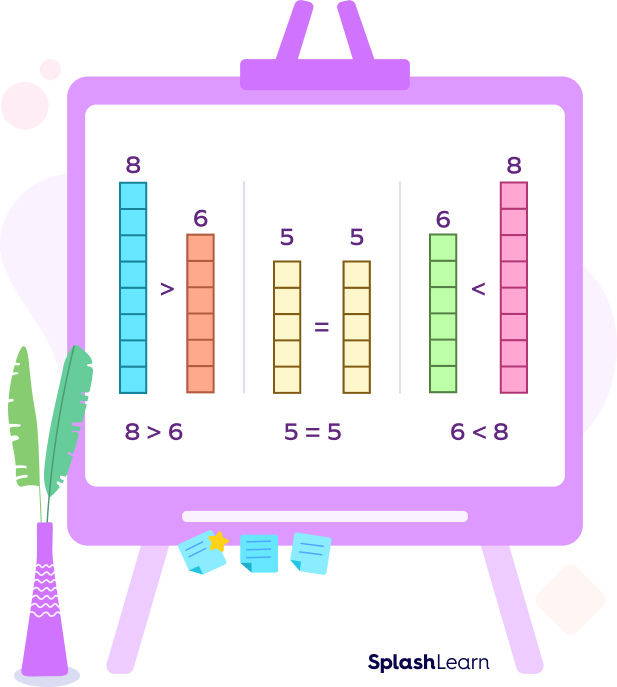
The above example is an illustration of how an object is compared by its height.
Fact:
1 cm $= 10$ mm
Conversion:
$\text{cm} \rightarrow \text{mm}$: Multiply by 10
$\text{mm} \rightarrow \text{cm}$: Divide by 10
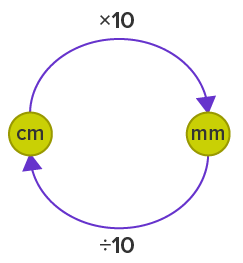
Fact:
1 m $= 100$ cm
Conversion:
$\text{m} \rightarrow \text{cm}$: Multiply by 100
$\text{c} \rightarrow \text{mm}$: Divide by 100
m and km
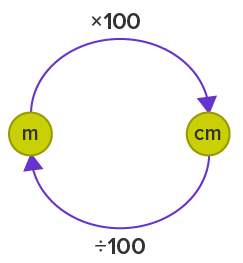
Fact:
1 km $= 1000$ m
Conversion:
$\text{km} \rightarrow \text{m}$: Multiply by 1000
$\text{mk} \rightarrow \text{m}$: Divide by 1000
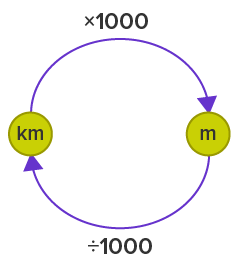
- Weight
The amount of matter a thing consists of is called its weight. Measuring weight means to measure the heaviness of a thing.
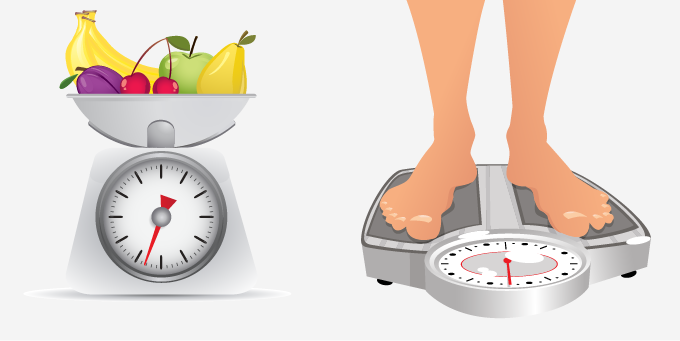
Weight tells us how heavy or light an object is. Let us look at all measurement units of weight that we commonly use.
- Ounces – The abbreviation used for ounces is “oz,” and it is used to measure the weight of small quantities like the weight of a slice of bread.
- Pound – The abbreviation used for pound is “lb,” and it is used to measure the weight of medium heavy objects like the weight of an animal.
- Ton – The abbreviation used for ton is “t,” and it is used to measure the weight of heavier objects such as the weight of a car.
Weight can be measured in grams, kilograms, and pounds. The metric units of measuring weight are kilogram (kg) and gram (g).

The metric system uses the following units of weight:
- Milligrams – The abbreviation used for milligrams is “mg,” and it is used to measure the weight of very light objects like the weight of a tablet.
- Grams – The abbreviation used for grams is “g.” and it is used to measure the weight of medium sized objects like the weight of tomatoes.
- Kilograms – The abbreviation used for kilograms is “kg,” and it is used to measure the weight of heavy objects like the weight of a sofa, or a bed.
Following are a few conversions of weight:
- 1 ton $= 2000$ pounds
- 1 pound $= 16$ ounces
The object can be compared with its weight.
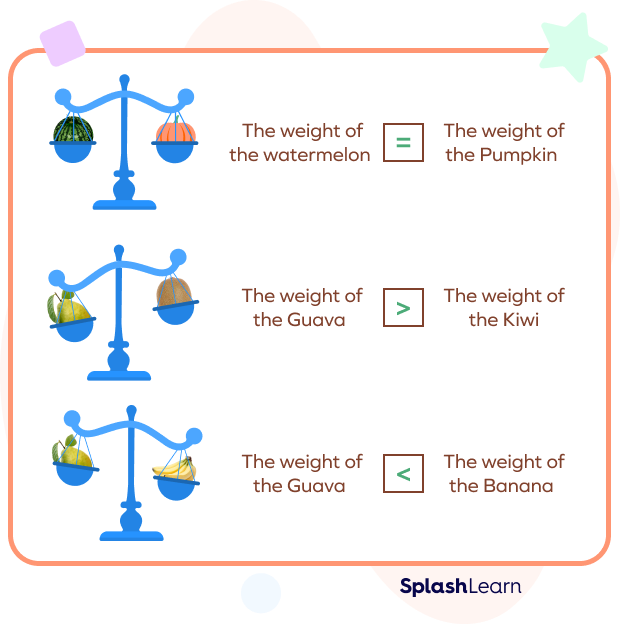
In the above example, we get to know how an object is compared by its weight.
Note: The heavier object weighs down and the lighter object weighs up on a weighing scale.
Fact:
1 kg $= 1000$ g
Conversion:
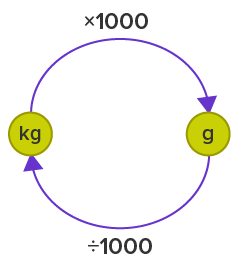
$\text{kg} \rightarrow \text{g}$: Multiply by 1000
$\text{g} \rightarrow \text{kg}$: Divide by 1000
- Volume
Volume is the space occupied by an object whether it is solid, liquid or gas. It is measured in cubic units for solids. Gallons, pints, quarts, and cups are some commonly used units to measure volume of liquids. We use units like liters and milliliters also to measure the volume of liquids. We can convert these units in the following manner:
1 gallon $= 4$ quarts
1 quart $= 2$ pints
1 pint $= 2$ cups
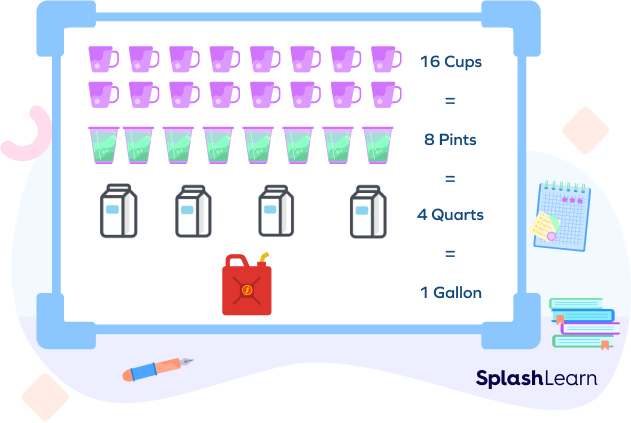
The units of measuring volume are milliliter (ml) and liter (L).
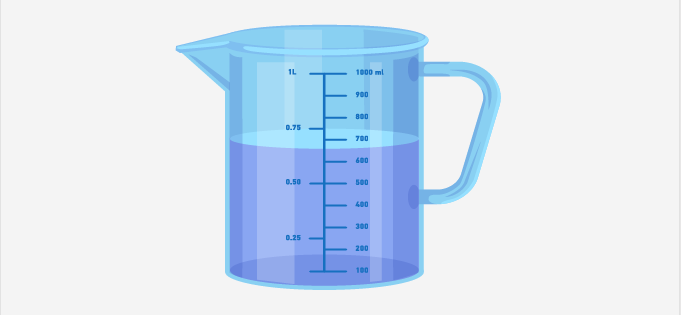
Fact:
1 L $= 1000$ ml
Conversion:
$\text{L} \rightarrow \text{ml}$: Multiply by 1000
$\text{ml} \rightarrow \text{L}$: Divide by 1000
- Capacity
Capacity is a measure of how much quantity a thing can hold.
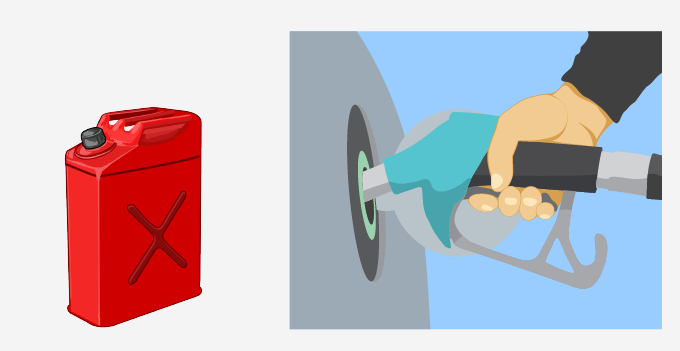
- Time
The ongoing sequence of events is time. We can measure time in seconds, minutes, hours, days, weeks, months, and years.
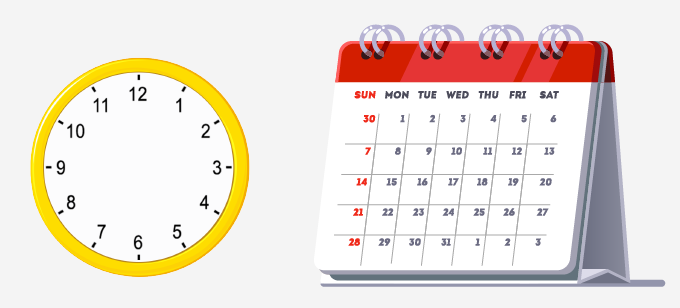
A clock and a calendar help us to measure time.
Time can be defined as an ongoing and continuous sequence of events that occur in succession, from past through present, and to the future. Time is used to quantify, measure, or compare the duration of events or the intervals between them, and even, sequence events.
The basic unit of time is the second.
There are also minutes, hours, days, weeks, months, and years.

Some of the time conversion are:
- 1 year $= 12$ months
- 1 month $= 4$ weeks approx.
- 1 week $= 7$ days.
- 1 day $= 24$ hours.
- 1 hour $= 60$ minutes
- 1 minute $= 60$ seconds.
- Money
Money is defined as a measure that is used by the people to buy goods and services. Money is a part of everyone’s life. Every country has their own currency. For example: the US has the American Dollar, the UK has the British Pound Sterling, Japan has the Japanese Yen, and India has the Indian Rupee. Each country’s currency value differs from other countries on the basis of their economy.

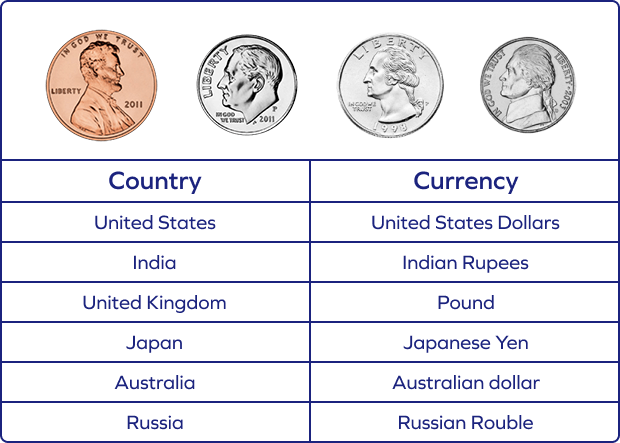
According to the US currency:
- $\$1 = 10$ dimes or 100 cents
- 1 quarter $= 25$ cents
- 1 dime $= 10$ cents
- 1 nickel $= 5$ cents
- 1 penny $= 1$ cent
- Temperature
The temperature of a thing is the measurement of how hot or cold it is.
Temperature is measured in Celsius, Fahrenheit, and Kelvin.
Temperature is to measure the degree of hotness and coldness of a body. Temperature is measured with the help of a device which is known as a thermometer.
The three units in which temperature is measured are Celsius $(^{\circ}\text{C})$, Fahrenheit $(^{\circ}\text{F})$, and Kelvin (K). In the United States, we use Fahrenheit most commonly.
The formulas to convert the temperatures are:
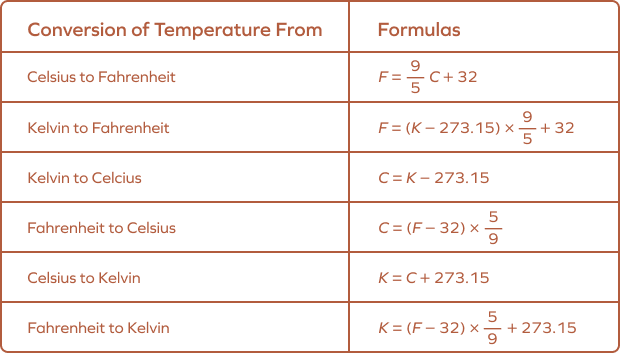
We can convert from one unit of measurement to another.
There are two measurement systems:
The Metric System
This system is based on the meter, liter, and gram as units of length (distance), capacity (volume), and weight (mass) respectively.
The US Standard Units
This system uses inches, feet, yards, and miles to measure length or distance.
Capacity or volume is measured in fluid ounces, cups, pints, quarts or gallons.
Weight or mass is measured in ounces, pounds and tons.
Fun Facts
| 1. The metric system was first proposed by the French astronomer and mathematician Gabriel Mouton in 1670 and was standardized in Republican France in the 1790s. 2. The US Standard units are also known as “English Units” or “US Customary Units”. 3. Ancient men didn’t use units to measure the length. Rather, they used their hand to measure the length which is now known as “hand-span”. |
Conclusion
In this article, we learnt about the units of measurement. Units of measurements are the units to measure and compare different objects, lengths, distance between two places, etc.
Solved Examples On Measurement
1. How many months are there in 3 years?
Solution: Number of months in 1 year $= 12$
Number of months in 3 years $= 3 \times 12 = 36$ years
2. Convert $45^{\circ}$ to Fahrenheit.
Solution: $\text{F} = \frac{9}{5}\text{C}+32$
$\text{F} = \frac{9}{5} \times 45 + 32=113$
3. How many dollars are there in 50 dimes?
Solution: $\$1 = 10$ dimes
1 dime $= \$ \frac{1}{10}$
50 dimes $= \frac{50}{10} = \$5$
4. How many yards are there in 90 foot?
Solution: 1 yard $= 3$ foot
$90 \div 3 = 30$ yards
5. The sum of heights of A and C is ______ units. (Provided, every square in the grid is of side 1 unit)
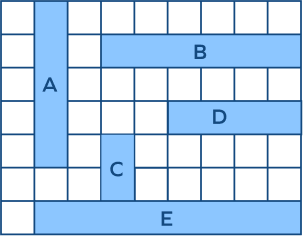
Solution: Height of A $= 5$ units
Height of C $= 2$ units
Sum of heights of A and C $= 5 + 2 = 7$ units
Example 6: Do the following conversions.
(i) 400 cm to meters. (ii) 3 kg to grams. (iii) 1.5 L to ml
Solution:
(i) We know that to convert from centimeters to a meter, we divide by a 100.
Therefore, $400$ $cm$ $= 400 \div 100 = 4$ m
(ii) We know that to convert from kilograms to grams, we multiply by 1000.
Therefore, 3 kg $= 3 \times 1000 = 3000$ g
(iii) We know that to convert from liters to milliliters, we multiply by 1000.
Therefore, $1.5 \text{L} = 1.5 \times 1000 = 1500$ ml
Example 7: Lucy, Eve, and Ragnar are comparing their heights. Lucy says that her height is 1 m, Eve says that her height is 900 mm and Ragnar says that his height is 97cm. Who is the tallest and the shortest person in height?
Solution:
Height of Lucy $= 1$ m
Height of Eve $= 900$ mm
Height of Ragnar $= 97$ cm.
To compare their heights, we need to change them into the same unit.
Height of Lucy $= 1 \text{m} = 1 \times 100 = 100$ cm
Height of Eve $= 900 \text{mm} = 900 \div 10 = 90$ cm
Height of Ragnar $= 97$ cm
Clearly, Lucy is the tallest and Eve is the shortest of all three.
Practice Problems On Measurement
Measurement - Definition with Examples
Which of the following is the lightest of all?




Orange is the heaviest of all. Between mango and apple, mango is the lighter one, so the mango is the lightest of all.
____ is costlier than the pencil box and ______ is cheaper than the ball.
Cost of pencil box $= \$ 20$
Price greater than $\$20$ is $\$30 =$ Cost of notebook
Cost of ball $= \$15$
Price less than $ \$15 = \$10 =$ Cost of pen
On converting 32 yards to foot, we get _____.
32 yards $= 32 \times 3 = 96$ feet
Which of the following is the correct measuring unit for weight of a coconut?
Ounces is used to measure capacity. Seconds is used to measure time, and yards is used to measure length or distance.
Which of the following is the correct measuring unit to measure the height of a ceiling?
Ounces is used to measure the weight of light objects. Minutes are used to measure time. Miles are used to measure distances.
Frequently Asked Questions On Measurement
What are a few units to measure time that are larger than a year?
To calculate the time, a few units which are larger than a year are decades, millennium, century, etc.
What is a light year?
Light year is used to measure very large distances, like the distance between two planets. 1 light year is equal to the distance that light travels in 1 year.
What is the difference between standard and non-standard units of measurement?
The standard units of measurement are those that remain constant throughout the world like 1 mile will be the same in the USA as well as Australia, whereas non-standard units can vary, like cups, handspan, etc. The handspan of every person can be different.
What is the measuring unit to calculate the speed?
Speed $= \frac{Distance}{Time}$. So, the measuring unit to calculate the speed is miles per hour (mph).

















